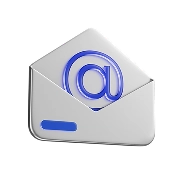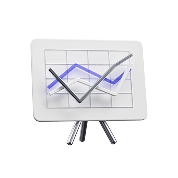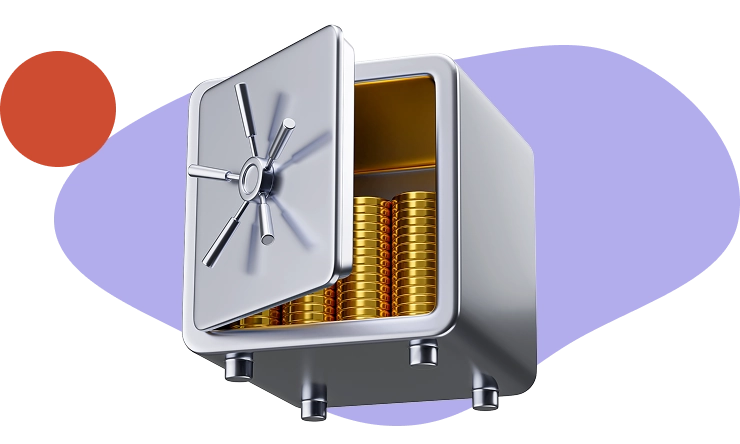Course Program
01 Introduction

Introduction to this course
02Introduction to Software Testing

What is testing in simple words
Where to expect the expected result for testing
What can cause our software to break?
Goals of testing
What is testing in more complicated words with an example
What is a bug. Examples of bugs in an online store
Where and when a tester finds bugs. Causes of bugs
03A humorous riddle about the duties of a tester

Riddle
Answer
04SFDS at the level of the whole project. Software development models (SCRUM, Waterfall)

Introduction. Software Development Life Cycle at the project level (SDLC)
SDLC. Idea stage.Examples
SDLC.“Gathering and analyzing requirements” stage.
SDLC. Idea stage.Examples
SDLC. “Gathering and analyzing requirements” stage.Examples
SDLC. Requirements gathering and analysis phase.Examples
SDLC. Design phase. Examples
SDLC. Implementation stage. Examples
SDLC. Testing” stage. Examples
SDLC. Implementation and Maintenance phase. Examples
Introduction. Software Development Models
Waterfall. Features of the model
SCRUM. Features of the model
05Fundamentals of SCRUM

Introduction to SCRUM
What is Backlog
What is Daily meeting (Daily meeting)
What is a Sprint
What is Sprint Planning?
Sprint Planning via planning poker
What is hindsight
Who is a Scrum Master and his responsibilities
Can a customer add a task in the middle of a sprint?
Canceling a sprint if the sprint is no longer relevant
Making a general calendar of scrum events
06Testing principles

Introduction
Principle 1 - Testing demonstrates the presence of defectsi
Principle 2 - Exhaustive Testing
Principle 3 - Early testing
Principle 4 - Defect accumulation
Principle 5 - The Pesticide Paradox
Principle 6 - Testing is context dependent
Principle 7 - Misconception that there are no bugs
07Introduction to test design

What is test design
Dynamic testing
Static testing
Positive and negative tests
False Positive and False nagative tests
Black Box / White Box test design techniques.
08Basic Black Box test design techniques

Introduction
Exhaustive Testing
Equivalence Partitioning
Boundary Value Analysis
09Test Design Techniques Cause/Effect (CE)

Cause/Effect (CE). Theory
Cause/Effect. Starting a negative test case. Registering a new user
10Pairwise test design technique

Introduction to Pairwise
Introduction to PICT
PICT. Taking apart the 'IF' function. Basic use
PICT. Analyzing the 'IF' function with the keywords IN; OR; AND; THEN
PICT. Analyzing the 'If - Else' function
PICT. Analyzing the 'Aliasing' function
PICT. Analyzing the 'Negative testing' function
PICT. Taking apart the 'Weighting' function
PICT. Taking apart the 'IF' function. Basic application
PICT. Analyzing the 'If - Else' function
PICT. Analyze the 'IN' function
PICT. Analyze the 'Aliasing' function
When to use PICT and AllPairs tools
First difficult task
Second challenge
Third challenge
11Decision table design techniques

Introduction to Decision table
A simple example of a Decision Table
Simple Decision Table assignment
More complex Decision Table assignment
Colaps decision table
What is the use of Decision Table
Assignment. Colaps decision table
Full Decision table where condition has three parameters
Colaps Decision table where condition has three parameters
Decisio table covarage
Big assignment on Full decision table
Big assignment on Colaps decision table
Visualization of cases on decision table
12State & Transition Diagram Design Techniques

Introduction
Element notation on a simple diagram example
How to test the diagram itself
Parsing the diagram using Lee Copeland's example
What a dotted line means in a state & transition diagram
Introduction to different types of state transition diagram test coverage
Statement and Transition coverage using Lee Copeland as an example
Introduction to n-switch coverage and how to calculate it using the example of Lee Copeland
Entry/exit points for n-switch coverage using Leah Copeland as an example.
First n-switch coverage assignment using Leah Copeland as an example
Second n-switch coverage assignment using Leah Copeland as an example
Assignment on the example of a bank ATM diagram
Parsing a large diagram. How not to make mistakes in drafting 1-switch covarage
Composing a 1-switch covarage for a large diagram.
How to describe test cases on state transition diagram in the form of a checklist
13State Transition Table design technique

Introduction
One-dimensional State transition table. Theory
Two-dimensional table. Part1. Theory
Two-dimensional table. Part2. Theory
Assignment. Parsing on the example of an ATM
14Use Case design technique

Use Case (Theory)
Use Case (Practice)
15Error Guessing Design Technique

Introduction to Error Guessing
Disadvantages of Test Design Technique - Error Guessing
Recommendations for using Error Guessing
16Testing Levels

Introduction
Modular Testing
Introduction to Integration Testing
What are stubs and why you need them for integration testing
Introduction to 'Big Bang' integration testing. Features
Introduction to 'Big Bang' integration testing. A Practical View
Introduction to Integration Testing - 'Top down'.
'Top Down' Integration Testing. Situation 1
Top Down” integration testing. Situation 2
How integration testing often works in practice
Introduction to system testing
How the system level testing process works
Why you should prepare for system testing
17State Transition Table design technique

Introduction
One-dimensional State transition table. Theory
Two-dimensional table. Part1. Theory
Two-dimensional table. Part2. Theory
Assignment. Parsing on the example of an ATM
18Use Case design technique

Use Case (Theory)
Use Case (Practice)
19Error Guessing Design Technique

Introduction to Error Guessing
Disadvantages of Test Design Technique - Error Guessing
Recommendations for using Error Guessing
20Testing Levels

Introduction
Unit Testing
Introduction to Integration Testing
What stubs are and why you need them for integration testing
Introduction to 'Big Bang' integration testing. Features
Introduction to 'Big Bang' integration testing. A Practical View
Introduction to Integration Testing - 'Top Down'
'Top Down' Integration Testing. Situation 1
'Top Down' integration testing. Situation 2
How integration testing often works in practice
Introduction to system testing
How the system-level testing process works
Why you should prepare for system testing
21Functional types of testing

Types of testing
Functional testing
Smoke Testing
Regression Testing
The order of regression tests (In-Depth and Out-Depth)
Re-testing
Build Verification Test
22Non-functional types of testing

Introduction
Stress Testing
Stability / Reliability Testing
Volume Testing
Failover and Recovery Testing
Cross-Browser Testing
Configuration Testing
23Bug and bug report for dummies

Introduction
Why bug reports are needed
Attributes of a bug report
A question on bug reports that is often asked to newbies in interviews
Starting the first bug report. Practice!
What is a bad, good and excellent bug report?
Priority vs Severity. Theory
Priority vs Severity. Practice
24Bug Report. Practice

Introduction
How to start a bug report, algorithm
Starting the second bug report
Starting the third bug report
Starting the fourth bug report
Starting the fifth bug report
Starting the sixth bug report
25Beginners' mistakes when making a bug report

Introduction
How NOT to correctly write 'Summary' in a bug report
How NOT to write 'Steps' in a bug report
How NOT to take screenshots
A breakdown of a poorly written bug report. Example 1
Parsing a poorly written bug report. Example 2
Parsing a poorly written bug report. Example 3
26Bug report life cycle

Introduction
Situation 1
Situation 2
Situation 3
27Making bug reports. Practice

Introduction
Describe the first bug report
Describe the second bug report
Describe the third bug report
28Jira / Bug report in Jira / Development Task in Jira / User Story

Jira. Introduction
Bug Report in Jira
Development Task in Jira
User Story
29Test Rail. Test Case. Checklist

Test Rail. Introduction
Introduction to the test case
Parsing the fields in the test case. Part 1
Parsing the fields in the test case. Part 2
The first variant of the test case (Maximum detailed). Part1
The first variant of the test case (Maximum detailed). Part2
Second variant of the test case (without all expected results).
Third variant of the test case (A set of steps on one page of the site).
Test Suite
Test report in the Test Suite run frame
Checklist. Introduction
Checklist. A low-level checklist. Part 1
Checklist. Low-level checklist. Part 2
Checklist. High-level checklist
30Specification

Introduction to specification
Introduction to Confluence
Specification Items in Confluence: Project Introduction
Specification Items in Confluence: Functional Requirements
Confluence Specification Points: Developer Documentation
Specification points in Confluence: Personnel Documentation
31Testing Metrics

Code Coverage
Defect Density
Test execution productivity (Test execution productivity)
Test case success rate (Test case success rate)
Test Automation RIO (Test Automation RIO)
Total defect localization efficiency (Total defect localization efficiency)
32Test Design Techniques - White Box

SQL Fundamentals
Introduction to SQL
SELECT command
WHERE
Select AND
Select OR
Select NOT
UPDATE command
DELETE command
Introduction to JOIN's
INNER JOIN command
LEFT JOIN command
RIGHT JOIN command
FULL JOIN command
33How to get your first job?

Introduction
Tips on how to write your first resume. The basics
My example resume that I started with
Linkedin
Introduction to interviewing a recruiter
Recruiter Interview.Part 1
Recruiter Interview. Part 2
Interview with a recruiter. Part 3
Interview with a recruiter. Part 4
An introduction to the technical interview.
How it happensTechnical interview. Main part. Part 1
Technical interview. The main part. Part 2
Introduction. Asking the right questions to ask technicians in a technical interview
Technical interview. Asking the right tech questions.
Tech interview. Asking the right project questions. Part 1
Tech interview. Asking the right design questions. Part 2
Tech interview. Asking the right general questions
Final interview with PM of the project or CEO of the company.
Common mistakes newbies make when looking for a job. Part 1
Common mistakes newcomers make when looking for a job. Part 2
How to behave during the probationary period
34Bonus. Certification.

Introduction to certifications
ISTQB family of certifications
ISTQB Foundation
ISTQB Advanced Test Analyst
SalesForce Admin / SalesForce App Builder
IQVIA OCE certification
35Bonus. Career

Salary increase through workaholism and sharp increase of skills
Salary negotiation through having an offer from another company
Rally 1 on 1
Change of specialty for a chiropractic tester























 Alina
Alina
 Dmitry
Dmitry
 Katya
Katya
 Ivan
Ivan
 Olga
Olga
 Sergey
Sergey
